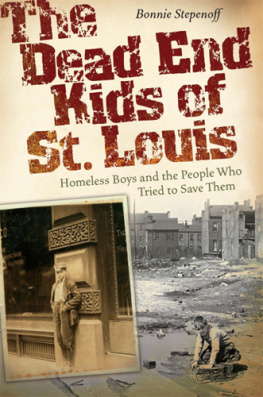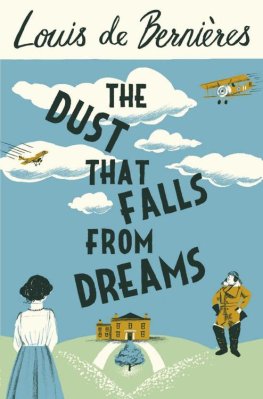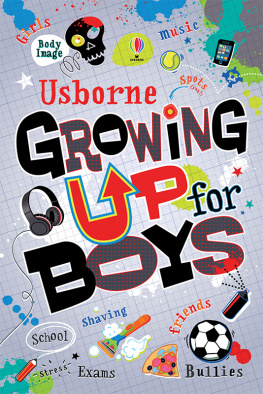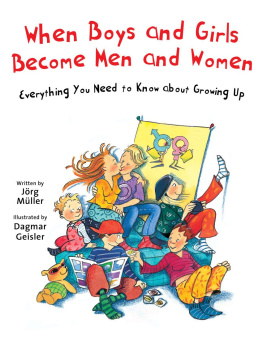Includes bibliographical references and index.
ISBN 978-0-8262-1888-9 (cloth : alk. paper)
1. Homeless boysMissouriSaint LouisHistory. 2.
Homeless boysMissouriSaint LouisSocial conditions.
3. Street childrenMissouriSaint LouisHistory. 4. Child
welfareMissouriSaint LouisHistory. I. Title.
HV4506.S25S74 2010
362.740977866--dc22
Preface
THERE ARE LOTS OF REASONS WHY WRITERS choose the topics of their books. Most of them are personal. The reason I wrote this book is personal: because my own father could easily have been a dead end kid, a high school dropout hanging around the bowling alley and the pool hall, without a future. After his father died, he worked as a pin boy in a bowling alley. Although he had a mother and an older sister, they were grief stricken and unable to cope with a wild and angry teenage boy.
At the age of seventeen, he fathered a child and married my mother, but the marriage did not last. Still in his late teens, he headed for California with a local reprobate named Killer Cane. They had a few adventures, met a few celebrities, briefly worked in an aircraft plant, found a variety of other jobs, and then came back home. My father came back to his wife and child. Killer Canes mother, who taught gym at my grade school, thought my father was a bad influence on her son. She never forgave me for being my fathers daughter. One day, while the class was marching in line, she deliberately stomped on my foot. My great-aunt Helen, the cafeteria lady, came running out onto the playground and shouted at her, warning her never to do such a thing again. My father was in the service at the time. Uncle Sam wanted him. He was drafted into the United States Army during peacetime in the late 1950s.
In the service, my father became a bit of a star, skiing with frauleins in the Alps and traveling around Europe with the Armys bowling team. He sent me a postcard from Brussels, a doll in a little red hood, and a musical alarm clock with a ballerina that moved up and down. I still have the letters he wrote to me while my mother and I lived in a small apartment, waiting for him to come home, and when he did come home, we found out that he had fallen in love with Beethoven and Verdi. He bought a stereo and played classical music at top volume.
After his tour of duty, he got a job selling office equipment and bought us a brick ranch-style house in a subdivision. This was middle-class life. He and my mother sent me to a good public school, and they entertained neighbors at dinner parties. They even drank the stereotypical martinis, and it seemed for a while that he had overcome his hard adolescence and found a way to live the good life, but it did not last very long.
He died of lung cancer at the age of thirty-five. Yes, he smoked cigarettes, but the likely cause of his cancer was exposure to asbestos during his late teens and early twenties, when he worked in a variety of places, including the blast furnace of a steel mill. He was gone before his life really got started, before anyone could find out what he might have been or done.
My fathers story is not unique or even terribly dramatic. He did not die in battle or end up in prison. As a matter of fact, he was one of the lucky ones. He got a taste, at least, of the American dream. But it is a sad storya story of wasted potential. Nobody wanted it to happen. Nobody planned it. But it happened because people failed to nurture and protect a vulnerable growing boy. The same thing has happened time and again. That is why I wrote this book.
Acknowledgments
IOWE A DEBT OF GRATITUDE TO the Friends of the Missouri State Archives for awarding me a William E. Foley Research Fellowship in support of this project. Mike Everman, Pat Barge, and Sharon Kenny of the Missouri State ArchivesSt. Louis went out of their way to search for court records pertaining to the cases of George William Thornton, Michael Mark Pretto, and others. Librarians and archivists at the Missouri Historical Society in St. Louis steered me to records of the St. Louis House of Refuge. William M. Fischetti and Susan Beattie of the Western Historical Manuscripts Collection at the University of MissouriSt. Louis directed me to the Bureau for Men Collection and helped me find photographs. Seth Smith of the Newspaper Library at the State Historical Society of Missouri in Columbia located illustrations and found copies of articles from the Missouri Republican and other newspapers. Christine Montgomery of the State Historical Society kindly provided scanned illustrations. Southeast Missouri State University provided funding for travel and other research expenses. The microfilmed newspapers on file at the Universitys Kent Library kept me busy for hours and days on end. I made far too many demands on the interlibrary-loan staff, and I am grateful for their assistance. Sharon Kinney Hanson generously shared with me her memories of her father, Raymond Kinney. The staff of Father Dunnes Newsboys Home (sometimes given as Father Dunnes News Boys Home), recently located in Florissant but now closed, allowed me to look at historical files. Gloria Thomas and John Brenner of the University of Missouri Press were perceptive editors whose careful work improved the manuscript immensely.
As always, I depended on my husband, Jerry, for moral support, company on research trips, and many laughs. The birth of my grandson, Syd, made this work even more meaningful and closer to my heart.
was published in slightly different form in the April 2010 issue of the Missouri Historical Review.
Introduction
Theres a blaze of fire crackling out of an old iron ash-can in the center of the street. The boys hover over it, roasting potatoes skewered on long sticks. Their impish faces gleam red one minute and are wiped by shadows the next as they lean over the flames.
SIDNEY KINGSLEY, Dead End
FROM THE 1930s THROUGH THE 1950s, a group of fictional young toughs known as the Dead End Kids captivated audiences on Broadway and in the movies. Sidney Kingsleys melodramatic play, Dead End, which opened in New York in 1935, graphically depicted the lives and longings of a group of boys who swam in a polluted river, cooked food over outdoor fires, smoked cigarettes, gambled, swore, fought, carried weapons, and became entangled in the criminal underworld on Manhattans Lower East Side. Kingsleys bad boys found even greater fame in a series of popular movies that toned down their antisocial behavior and diluted the playwrights message that life in urban slums was destroying the innocence of children and depriving young men of the fundamental American right to pursue a bright and happy future.
For more than a century before the opening of Dead End, citizens in American cities had tried to address the problem of unsupervised youngsters on dangerous streets. In the early 1800s, churches and charitable organizations opened orphanages to shelter children who had no parents or whose parents failed to properly care for them. Throughout the nineteenth century, orphanages and other institutions used the indenture system, which involved placing children in the homes of families who would often act as employers demanding that the children work to earn their keep. By midcentury, philanthropic organizations such as the New York Childrens Aid Society tried to place children in foster homes, without an indenture obligating them to work, in the hope that they











